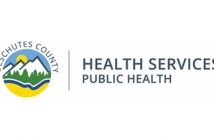On July 1, 2017, and nearly two years after it passed the legislature, OregonSaves will be launched. OregonSaves is a state-administered retirement program designed to provide a retirement option to those individuals who do not have access to a retirement plan at work.
How does OregonSaves work?
Employees of non-exempt employers (more on this in a moment), will be automatically enrolled in the program over the next three years. Employees will be enrolled to make a contribution from their paychecks at a default rate. However, they will have the option to adjust their contribution numbers up or down. Contributions into the OregonSaves program will be made into a Roth individual retirement account (IRA) and will be subject to contribution limits associated with those accounts.
How are Roth IRAs different from employer-sponsored retirement options, like 401(k) plans?
A Roth IRA is a type of individual retirement account through which individuals can contribute post-tax income for investment. Roth IRAs differ from the retirement plans offered by employers in several ways.
The first is the total amount that an employee can contribute into the plan. These limits typically adjust on an annual basis, but for 2017, employees (assuming they do not exceed IRS income limits) under the age of 50 will be able to contribute up to $5,500 per year. Those 50 and over will be able to contribute $6,500 per year. For purposes of comparison, 401(k) plans currently allow those under the age of 50 to contribute $18,000 per year and those age 50 and over to contribute $24,000 per year. Employer contributions are also permitted to 401(k) plans, which increase the total contribution limit to $54,000 for those under 50 years of age and $60,000 for those age 50 and over. Employees participating in an employer-sponsored plan are not eligible for OregonSaves.
Roth IRAs also differ from 401(k) plans in that only post-tax contributions are allowed into a Roth IRA. While 401(k) plans can allow post-tax contributions, most employee contributions are made on a pre-tax basis.
A final key difference between a Roth IRA and a 401(k) plan is how the account is administered. Employer sponsored plans, like 401(k) plans, are sponsored by an employer, and the employer is responsible for distributing plan notices and other materials to plan participants, and the employer is bound by certain fiduciary obligations. Roth IRAs, on the other hand, are individual accounts over which employers do not have responsibility and to which employers do not owe fiduciary duties.
What do employers need to do if they already offer a retirement program?
While OregonSaves launches on July 1, 2017, this initial launch is just a pilot program for a small group of specified employers.The practical reality is that OregonSaveswill roll out to employers of varying sizes over the next three years. Prior to the date a particular employer is covered by the rules, that employer will need to let the state know if the employer is exempt from the program. Employers that offer their own retirement plans (like 401(k) or 403(b) plans) are exempt and should plan to file for an exemption using the state’s online process. Where an employer does not file for an exemption, its employees will be automatically enrolled as of the date designated for the employer’s particular workforce size:
Employers with 100 or more employees: November 15, 2017;
Employers with 50-99 employees: May 15, 2018;
Employers with 20 to 49 employees: December 15, 2018;
Employers with 10 to 19 employees: May 15, 2019;
Employers with 5-9 employees: November 15, 2019; and
Employers with 1-4 employees: May 15, 2020 (1-4 employees).
The state intends to send notices alerting employers when they should file any exemption.
How will OregonSaves work for those employers that are not exempt?
Employers that do not qualify for an exemption will need to register with OregonSaves and link a payroll account up with the program. Employers will also need to enter employee information into the program, but this can be done through an Excel spreadsheet upload. Once OregonSaves has employee information, it will provide a notice to employees giving them 30 days to claim their account or opt out of the program.
Employees that do not opt out completely or select a different contribution rate, will contribute at a rate of 5 percent of gross pay, and this amount will be automatically increased by 1 percent each year. Employees always have the option to adjust their contribution rates within IRS limits though.
Those employees who earn above the IRS limits for Roth IRAs will either be enrolled with a reduced contribution limit or will not be enrolled (depending upon where their incomes fall within IRS rules).
At the July 11 Barran Liebman Breakfast Seminar, Anthony Kuchulis will discuss other key employment laws from Oregon’s 2017 legislative session. Space is limited and those interested are encouraged to visit www.barran.com and click on ‘Seminars’ to learn more and register for this event.
Iris Tilley is a partner at Barran Liebman LLP. She advises employers about all aspects of employee benefits, including ACA compliance. Contact her at 503-276-2155 or itilley@barran.com.





